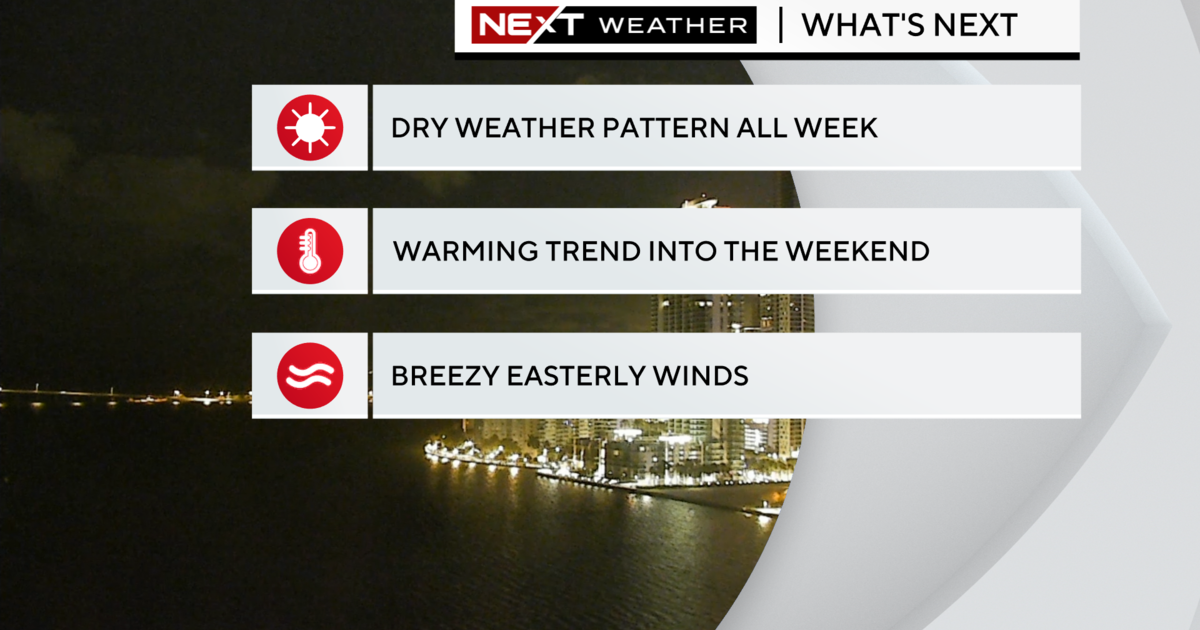Solar Storm Not Nearly As Bad As Could Have Been
WASHINGTON (AP) — Our high-tech world seems to have weathered a solar storm that was still showing signs of life late Thursday.
While some experts think the threat from the solar storm passed by earlier in the day, space weather forecasters said it's still too early to relax because the storm's effects could continue through Friday morning.
Around midnight EST Thursday, the storm reached what forecasters called a "moderate level."
"We've seen a bit of an increase in mag (magnetic field) geo-activity, relative to what we saw earlier today," said Norm Cohen, a senior space weather forecaster at the National Oceanic and Atmospheric Administration's Space Weather Prediction Center in Boulder, Colo.
He wasn't aware of any significant effects to key electrical or technological systems, but said there was a two-hour blackout of high frequency radio communications — affecting mainly ham radio operations — stretching from eastern Africa to eastern Australia.
Hours earlier, NASA solar physicist David Hathaway said that it appeared that the storm was over, based on a drop in a key magnetic reading.
But Doug Biesecker — also with the weather prediction center, which forecasts solar storms — pointed to an increase in a different magnetic field measurement.
Scientists do agree that other storms may be lining up in the cosmic shooting gallery in the coming, days month and year.
The storm, which started with a solar flare Tuesday evening, caused a stir Wednesday because forecasts were for a strong storm with the potential to knock electrical grids offline, mess with GPS and harm satellites. It even forced airlines to reroute a few flights on Thursday.
It was never seen as a threat to people, just technology, and teased skywatchers with the prospect of colorful Northern Lights dipping further south.
But when the storm finally arrived around 6 a.m. EST Thursday, after traveling at 2.7 million mph, it was more a magnetic breeze than a gale. The power stayed on. So did GPS and satellites. And the promise of auroras seemed to be more of a mirage.
"I think we just lucked out," Jeffrey Hughes, director of the Center for Integrated Space Weather Modeling at Boston University, said Thursday afternoon. "It just didn't pack as strong a magnetic field as we were anticipating."
Scientists initially figured the storm would be the worst since 2006, but now seems only as bad as ones a few months ago, said Joe Kunches, a scientist at the NOAA center. The strongest storm in recorded history was probably in 1859, he said.
"It's not a terribly strong event. It's a very interesting event," Kunches said.
Forecasters can predict the speed a solar storm travels and its strength, but the north-south orientation is the wild card. This time it was a northern orientation, which is "pretty benign," Kunches said. Southern would have caused the most damaging technological disruption and biggest auroras.
North American utilities didn't report any problems, said Kimberly Mielcarek, spokeswoman for the North American Electric Reliability Corporation, a consortium of electricity grid operators.
Astronomers say the sun has been relatively quiet for some time. And this storm, forecast to be strong and ending up minor, still may seem fiercer because Earth has been lulled by several years of weak solar activity.
The storm is part of the sun's normal 11-year cycle, which is supposed to reach a peak next year. Storms as large as the latest one will probably happen several more times as the cycle ramps up to that peak, scientists said.
The region of the sun that erupted can still send more blasts our way, Kunches said. Another set of active sunspots is ready to aim at Earth.
"This is a big sun spot group, particularly nasty," NASA's Hathaway said. "Things are really twisted up and mixed up. It keeps flaring."
Storms like this start with sun spots. First, there's an initial solar flare of subatomic particles that resembles a filament coming out of the sun. That part usually reaches Earth only minutes after the initial burst, bringing radio and radiation disturbances. Next is the coronal mass ejection, which looks like a growing bubble and takes a couple days to reach Earth.
Solar storms have three ways they can disrupt technology on Earth: with magnetic, radio and radiation emissions. In 1989, a strong solar storm knocked out the power grid in Quebec, causing 6 million people to lose power.
For North America, the good part of a solar storm — the one that creates more noticeable auroras or Northern Lights — was likely to peak Thursday evening. Auroras were likely to dip only as far south as the northern edges of the United States, Kunches said, but a full moon would make them harder to see.
Solar storms can bring additional radiation around the north and south poles — a risk that sometimes forces airlines to reroute flights. On Thursday, Delta Air Lines and United Airlines sent 11 flights to Asia on a more southern route rather than their more common path over the Arctic. Three American Airlines flights flew lower than normal over the northernmost parts of their routes to Japan and China.
(© Copyright 2012 The Associated Press. All Rights Reserved. This material may not be published, broadcast, rewritten or redistributed.)



